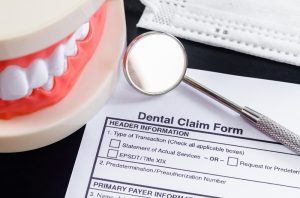Go to Page Section:
In the sphere of pharmaceutical legal disputes, Suboxone, once touted as a groundbreaking remedy for opioid addiction, has now become involved in a complex legal predicament due to purported dental injuries linked to its usage.
Individuals grappling with dental issues arising from prolonged Suboxone use might find themselves eligible to seek legal redress.

However, understanding the legal aspect surrounding these lawsuits requires a clear grasp of eligibility criteria and the procedural steps inherent in initiating legal action.
Understanding Eligibility for Suboxone Lawsuits
Eligibility criteria serve as the foundational framework for pursuing legal action related to Suboxone-induced dental injuries. To qualify for such a lawsuit, several criteria must be met:
Duration of Suboxone Use
Eligible individuals must have been prescribed Suboxone for a minimum duration of six months to treat opioid use disorder or manage chronic pain. Short-term usage might not serve as a substantive basis for pursuing legal recourse concerning dental issues.
Documentation of Dental Injuries
Proving dental injuries attributable to Suboxone entails demonstrating manifestations such as tooth decay, cavities, gum disease, enamel erosion, or related problems within a few months of commencing Suboxone treatment.
Comprehensive medical records, dental examinations, x-rays, and visual documentation of dental conditions pre- and post-Suboxone usage are instrumental in fortifying the case.
Lack of Prior Awareness
Crucially, claimants need to establish that they were inadequately informed about the potential dental risks associated with Suboxone prior to embarking on the treatment regimen. Insufficient warning labels or disclosures about these risks significantly boost the foundation for legal action.
Initiating Legal Recourse
Once eligibility for a Suboxone lawsuit is ascertained, navigating the path toward legal recourse entails a series of vital steps:
Seeking Legal Representation
Affected individuals are strongly advised to engage the services of specialized attorneys well-versed in handling pharmaceutical litigation. These legal experts possess the experience required to navigate the complexities of Suboxone lawsuits and offer indispensable guidance through the legal process.
Gathering Compelling Evidence
Building a strong case depends on the accumulation of comprehensive evidence. Plaintiffs must gather detailed records encompassing Suboxone usage, medical and dental treatments, the evolution of dental injuries, and any documentation indicating inadequate warnings regarding dental risks associated with Suboxone.
Comprehending Statutes of Limitations
A thorough understanding and strict adherence to statutes of limitations are the next most important steps. Lawsuits must be filed within specified timeframes, typically ranging from 1 to 3 years from the identification of the injury. Prompt action upon discerning dental issues attributed to Suboxone is paramount to avoid forfeiting the opportunity for legal recourse.
Legal Proceedings
Upon filing the lawsuit, attorneys representing the plaintiffs commence legal proceedings. This phase encompasses court filings, negotiations with defendants, and potential discussions aimed at reaching a settlement.
What You Need to File a Lawsuit
Filing a lawsuit concerning dental injuries associated with Suboxone demands a meticulous assembly of critical components. The following requirements are vital for initiating legal proceedings:
Medical and Dental Records
Comprehensive records encompassing your Suboxone usage, medical history, and dental treatments are indispensable. Documented evidence of the duration of Suboxone use, dosage details, prescriptions, and any changes in dental health during the course of treatment form the backbone of your case.
Specific Details of Dental Injuries
Precise documentation outlining the nature and progression of dental injuries attributed to Suboxone is crucial. These may include details of tooth decay, cavities, gum disease, enamel erosion, or any other related dental issues.
Photographs or visual evidence of the dental conditions before and during Suboxone usage serve as compelling supporting evidence.
Communication Records
Any correspondence or communications with healthcare providers or the prescribing physician regarding dental issues or concerns while on Suboxone are essential. This might include emails, letters, or recorded discussions highlighting complaints or inquiries about dental problems while undergoing Suboxone treatment.
Witness Testimonies
Statements from witnesses such as family members, friends, or colleagues who have observed or been aware of the dental issues and their impact on your life can be valuable. Witness testimonies serve to corroborate and strengthen your claim regarding the adverse effects of Suboxone on dental health.
Proof of Lack of Warning or Disclosure
Documentation indicating a lack of adequate warning about the potential dental risks associated with Suboxone is pivotal. This might include information from official sources, packaging labels, medical literature, or disclosures provided by the pharmaceutical company regarding the drug’s side effects.
Legal Representation
Engaging the services of an attorney specializing in pharmaceutical litigation is crucial. An experienced attorney familiar with Suboxone lawsuits can provide invaluable guidance, navigate legal complexities, and ensure the compilation of requisite evidence in accordance with legal standards.
Adherence to Statutes of Limitations
Understanding and complying with the statutes of limitations governing your jurisdiction is imperative. Failing to file within the stipulated time frames might lead to the dismissal of the case, emphasizing the importance of prompt action upon recognizing the dental issues related to Suboxone.
Embarking on the journey of filing a lawsuit associated with Suboxone-induced dental injuries necessitates meticulous preparation and documentation. By diligently assembling all the crucial components, individuals affected by Suboxone-induced dental issues can take significant strides toward seeking legal redress.
Role of Attorneys in Suboxone Lawsuits
Specialized attorneys serve as the backbones of Suboxone lawsuits, assuming multifaceted roles:
Evidence Aggregation
Attorneys facilitate the collection and organization of requisite evidence bolstering the case. They possess a keen understanding of the court’s documentation prerequisites.
Legal Procedures
Lawyers adeptly navigate legal filings, ensuring adherence to court procedures and deadlines with precision.
Negotiations and Settlements
Seasoned attorneys engage in negotiations with defendants, striving to secure a fair settlement that compensates plaintiffs for dental injuries attributable to Suboxone. In instances where a satisfactory settlement remains elusive, attorneys diligently prepare the case for trial.
Conclusion
The issue of Suboxone lawsuits revolving around dental injuries is complex, to say the least, so it necessitates a diligent approach. Individuals struggling with dental repercussions stemming from Suboxone use should understand the eligibility criteria and legal procedures entailed in seeking compensation.
Collaborating with specialized attorneys, gathering comprehensive evidence, and adhering rigorously to legal timelines are the vital steps necessary to navigate these lawsuits. As these legal proceedings unfold, affected individuals must promptly seek legal counsel to explore their entitlements and potential avenues for obtaining compensation.


Leave a Reply